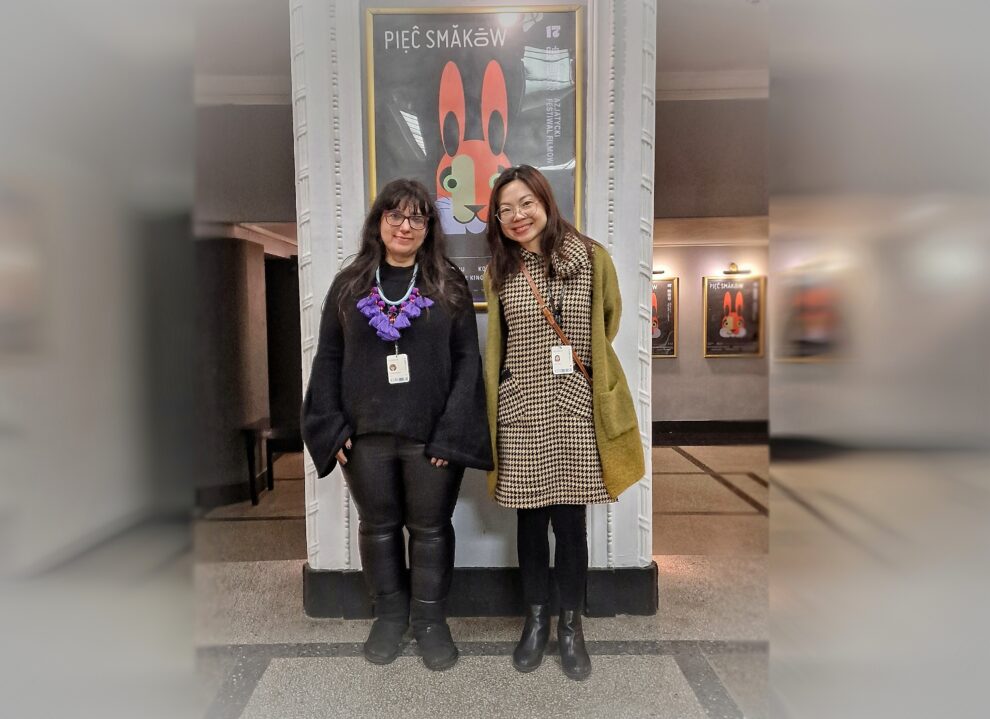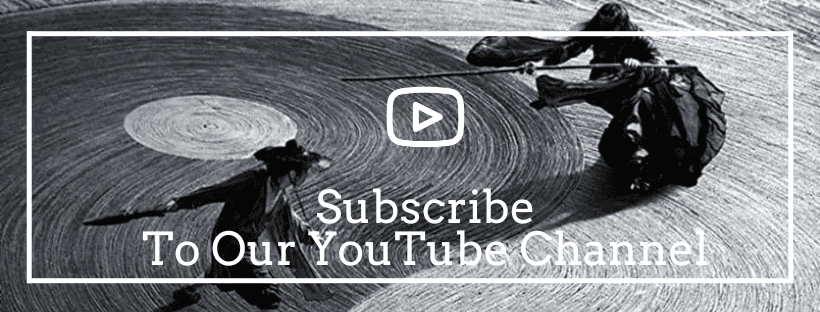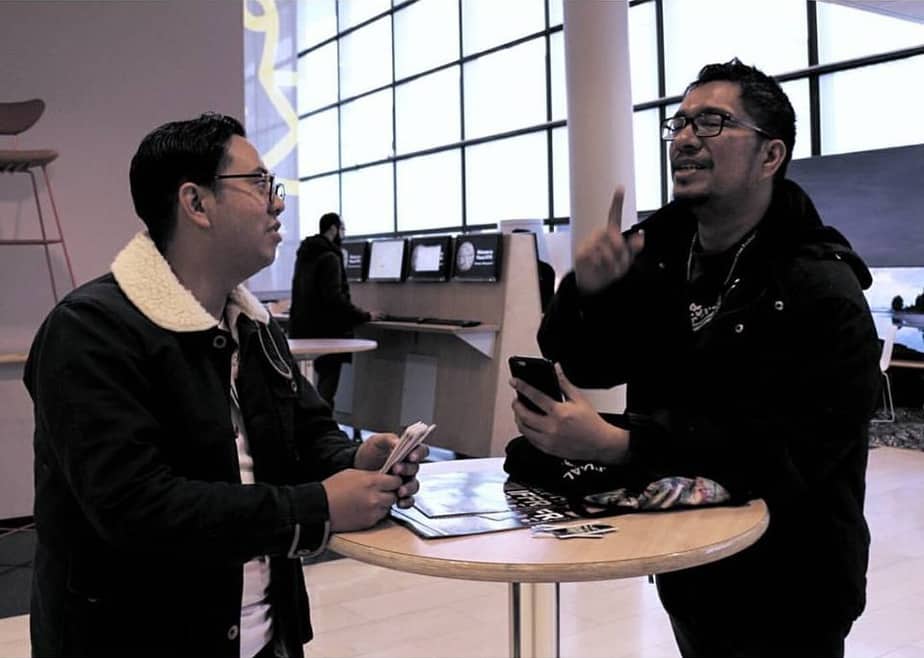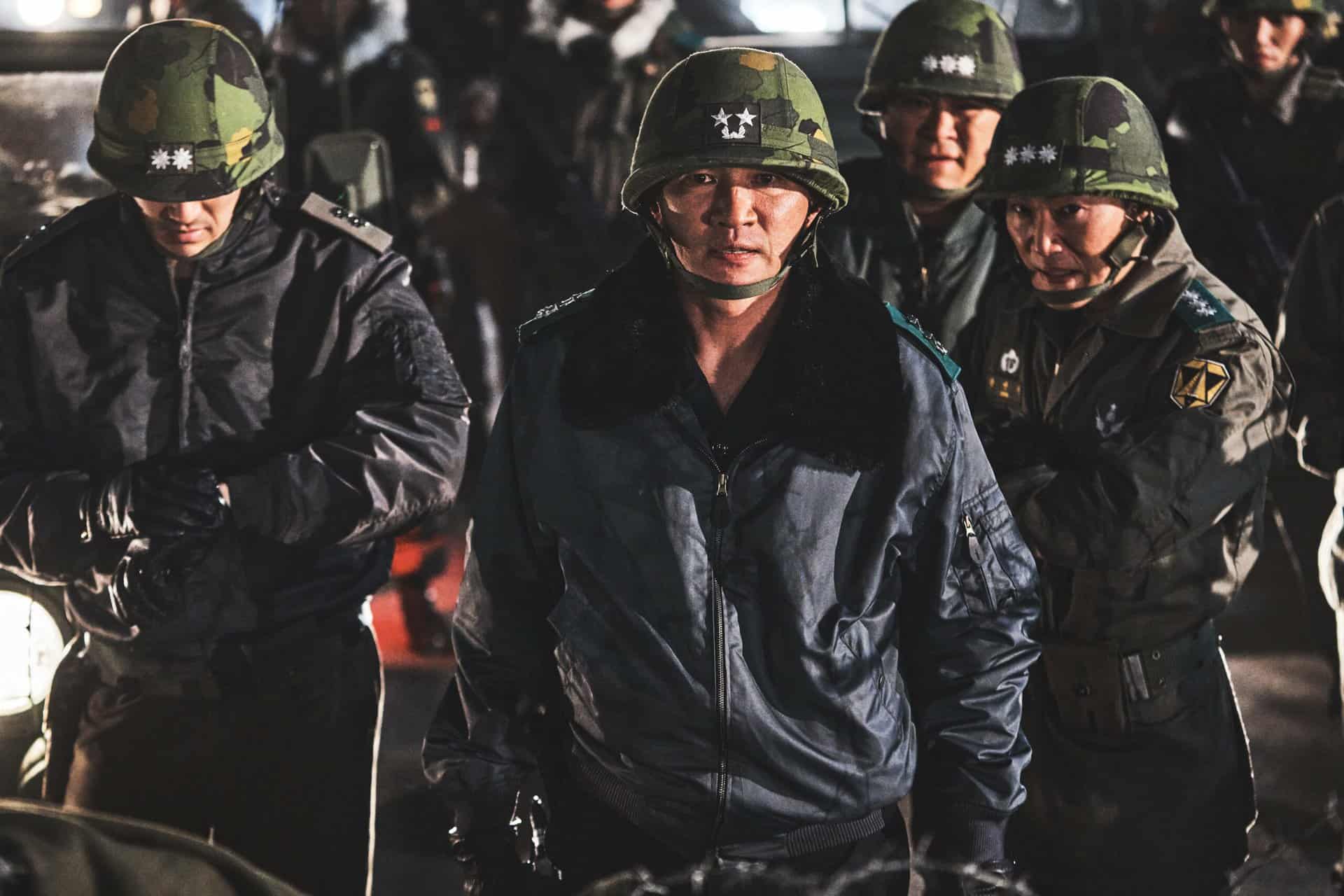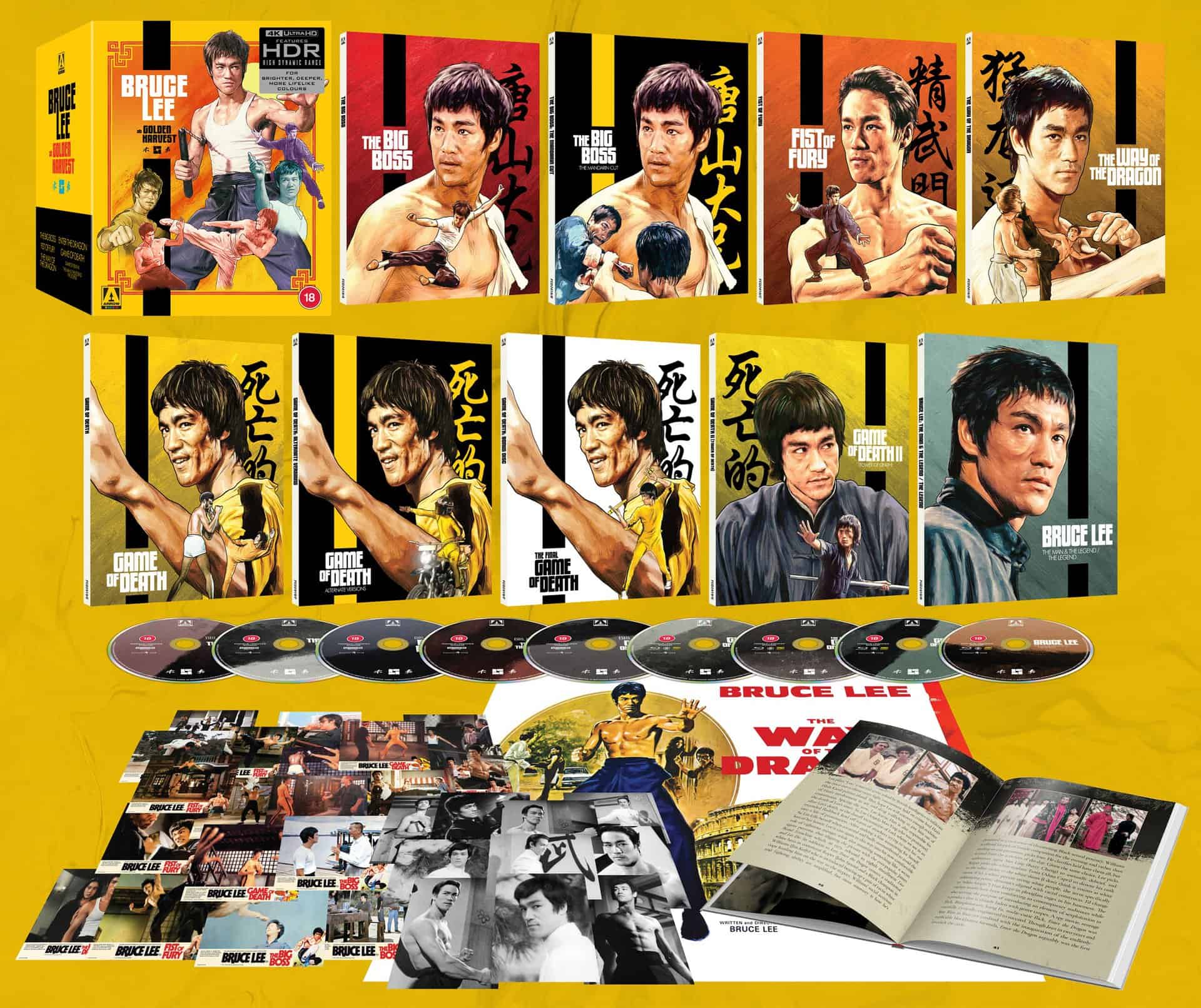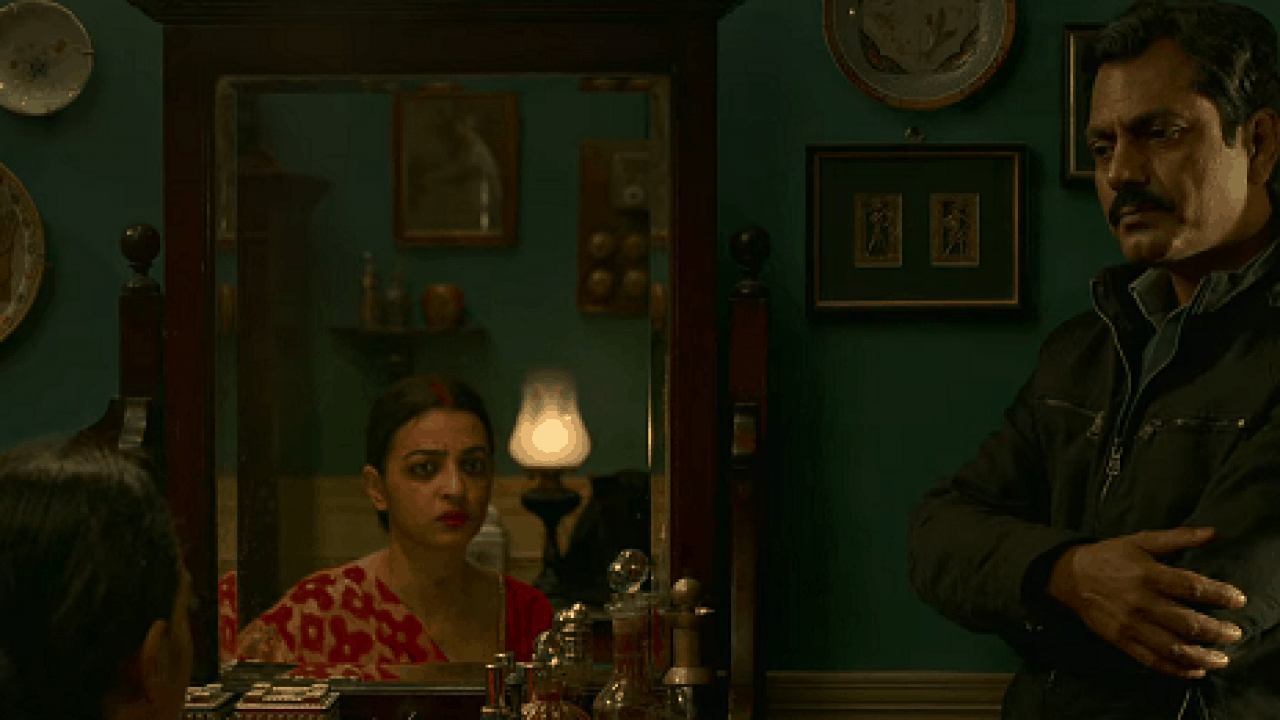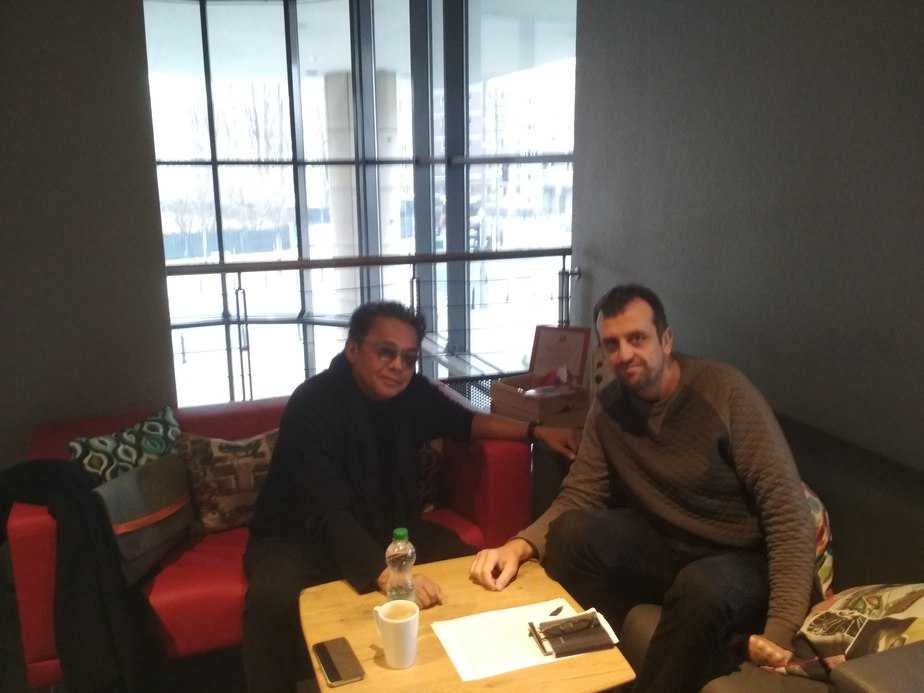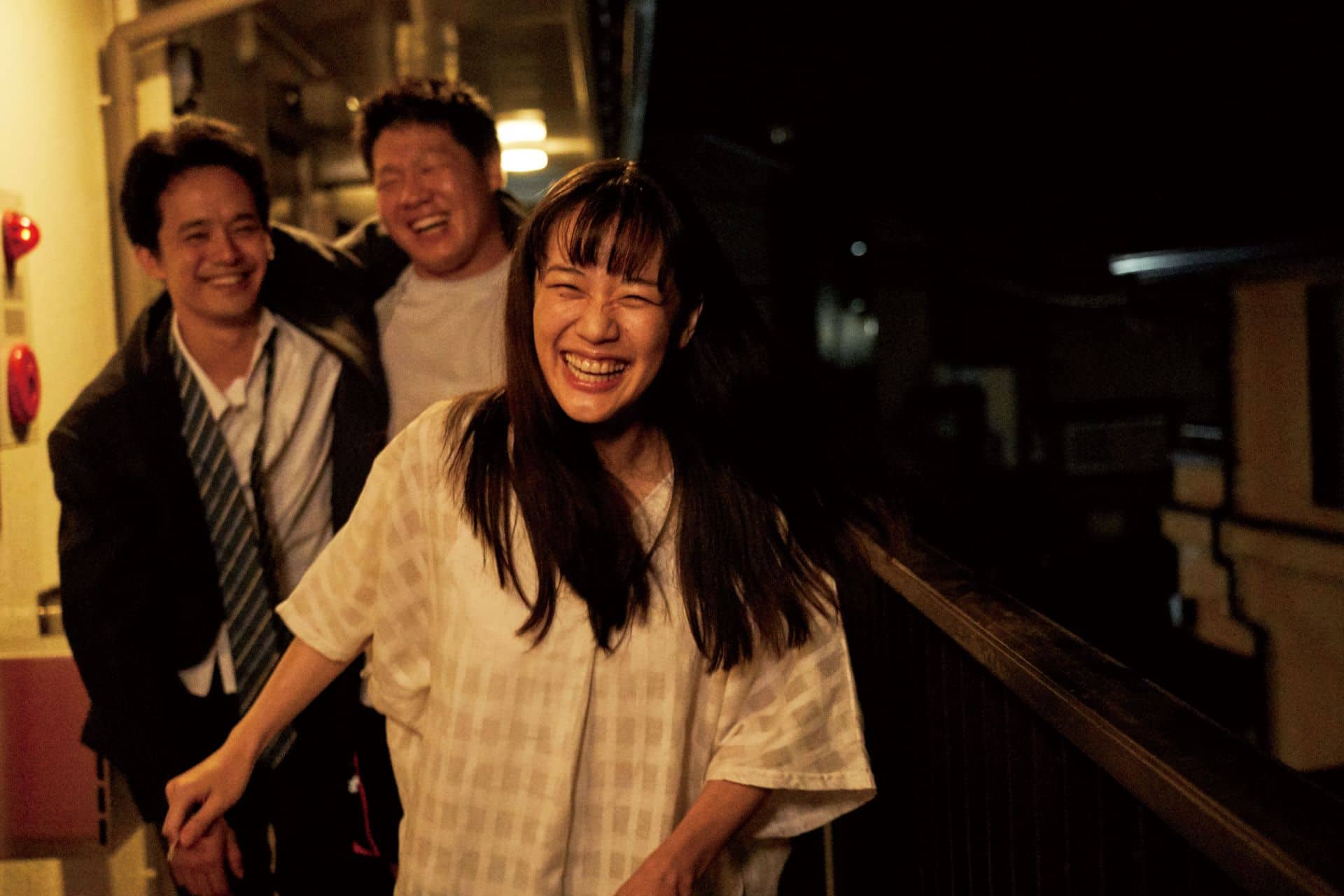Anastasia Tsang studied in Paris at the Sorbonne University. Her cinema journey began with a short film “Marriage Sans Frontières,” presented at the 2011 Cannes Film Festival. In 2018, she co-directed the TV series “Till Death Do Us Part.” “A Light Never Goes Out,” a movie revoking the Hong Kong neon signs nostalgia, but also dealing with loss and moving on, is her debut feature. On the occasion of screening at Five Flavours Film Festival, we recall our neon-related memories, discover the secrets of craftsmen and their craft, as well as the cultural significance of neons. We also wonder about the importance of bonding between generations, and the loneliness of post-COVID times.
A Light Never Goes Out is screening at Five Flavours

Characters from your movie have beautiful and intimate memories connected with neon signs. So I am curious, do you have your special neon-related memory?
It's hilarious, but I've had a memory that was blurred in my mind completely. It came back to me when I started making this film. It was a reminiscence of a drawing I made when I was about four or five years old. During my very first art lesson, my teacher gave me a photo of neon signs-lighten Hong Kong streets. I made a picture based on it. I recall this image in a film, it is the picture from the flashback which the daughter painted with her father. And the technique of making it is exactly how I did it as a kid. So there is a genuine connection between my first movie and my first forgotten artwork. Though actually it wasn't forgotten. Subconsciously it was always there, waiting for the right moment. So maybe this dim memory triggered me to make this movie.
I can tell you about my memory. I associate neon signs with old cinemas that I remember from my childhood. Those single- or doublescreen cinemas, that closed down with the passage of time.
The Cinema Paradiso type?
Yes, exactly. And usually, they had those big neon signs with their names. I lived outside Warsaw, in a small town without a cinema theater. So I was coming here with my parents for cinema screenings. My map of the city was the map of the neon signs of the cinemas I visited.
I still see a few buildings here in Warsaw with neon signs, which is quite amazing.
Yes, it is great to have them. Hong Kong in common consciousness is associated with neon signs. What are the neon signs for Hong Kong's identity?
I think it's complicated. We are aware that neons are fascinating and they have become the symbol, but maybe more for international people and tourists. Though our minds are neon-lighten. Neons bring a sense of nostalgia and memories of the economic bloom of the good old days. They keep recurring in many local creations, like comic book depictions of Hong Kong or in newly-designed restaurants. The neon signs are the fundament of the collective memories of older generations. But the youngsters, who were born after 2000, haven't seen any spectacular neons. However, through the hype of taking Instagram photos, they rediscover the beauty of the old-school designs and want to learn about the past of the city. Also, among my audience, I have very young people. They took an interest in the subject because of the hype of IG photos. So I think neons are timeless beauty that outlasts through generations for us.
Check also this article
How did you meet the craft makers of the neon signs? In the end during the credits, you provide information about real-life artisans who made particular signs.
It wasn't easy. They are not well known and they work very discreetly. At first, we had just one consultant of neon making, who had been interviewed by the media. So it was easier to approach him. It took some time to connect to others and convince them to talk to us. In some cases, I had to call several times and they were just turning down my calls. So I waited outside their studios. Many of them were asking: “Why do you want to interview us? No one cares about our work anymore.” But after my repeated attempts of contact, they understood: “Oh, this girl is really serious about doing this thing.” So they started talking to me and gradually became more open and keen to share their craft and stories about how they were trained. With genuine excitement, they talked about all the techniques and the days when they were apprentices living in their masters' studios. I regret that I couldn't show that part. It would have required a lot of budget to recreate the neon-making factories from the past, where the masters and their students lived together since the students were just ten or twelve years kids.
So they were starting to learn at a very young age.
Yes. The masters, who owned the factories, needed young helpers. At that time, Hong Kong's economy was not that good. So many members of the generation of my mother had to work since they were kids to support their families. It was the same with neon makers' apprentices.
Were they family members?
Some of them. It depended. They may have joined the industry through relatives, but also through friends or neighbors' connections. And what happened next? At first, those kids weren't paid. The masters provided them with food and a place to stay. So they lived together, shared meals, and such. It was a tough life. They had to get up early, like at five. Of course, initially, they didn't have important neon-related tasks. They were doing minor errands, like cleaning and preparing some tools. With time, gaining trust in a particular child, the master would start teaching him, and they learned by practice. It wasn't a systematized kind of training, there was no school in neon sign making. Apprentices just learn by watching, observing, and doing. So this is a very special kind of working culture of that time in Hong Kong. And the relationship was more than between employer and employee. Despite not being able to recreate the functioning of old factories in my movie, I tried to bring back their atmosphere in a bond between Leo and Bill. They are friends, a master and an apprentice, but also they share a father-son relationship. So it's not only about teaching the craft but also about the bonding of two generations.
Yeah. And similarly like in that old model of masters living with apprentices, Bill allowed Leo to stay at the workshop.
Yes. So it resembles what was happening in Hong Kong. By the way, I noticed certain qualities of old masters which are unlike today's. For example, now everyone is enjoying the hype of IG sharing. No matter how tiny is my work, I need to let the world know about it. The old masters I met prefer to stay low profile. They are very old-fashioned people. Also, neon sign making is an old-fashioned craft, so their approach differs. They are not taking advantage of other people. When they charge a client, they would just take a sufficient sum. They don't maximize profit, which is the business strategy nowadays. Creating the character of Bill, I wanted to interlace into his personality the traits of the craftsman I've met. So in a way, he represents a lost image of old-fashioned Chinese Hong Kong people.
I guess people are not quite familiar with the HK government's ordinance that changed the city's neon landscape. Was it in 2010, when they introduced the regulations barring those big impressive signs?
In 2010 it was first mentioned and launched, but actually, it started earlier, from 2000. But there was a certain grace period during which they did not take much action. But after 2010, it speeded up. So the government department started sending staff from district to district to mark down all the neon signs that didn't fit the required size restrictions. Then they would send letters to ask shop or restaurant owners to take them down. Refusing to do so would result in a financial penalty or such. But one thing is really tricky for me. The government cited the safety as the reason. If there is a typhoon, some old signs might fall and cause damage and injuries. However, throughout Hong Kong's history, not a single person was killed due to the neon incident. On an everyday basis, people die because of car accidents. With all those removal issues, the crucial part is the importance of a sign. For Chinese people or Hong Kong people, the sign of a shop is more than just an advertisement. It represents the legacy of the whole family. We have a saying that a sign being taken down is something disastrous for our family, because not only the shop vanishes but also the heritage of the whole. So it is a very serious matter.
I can imagine…
It's like with the removal of the sign, you destroy the whole family, destroy its legacy. There was one tea house in Hong Kong with a history of more than 50 or 60 years. They closed the shop because their sign was taken down. Of course, they were very old business, they may have wanted to close down, e.g. because the father owning the shop aged and the son didn't want to run it any longer. But the removal of the sign could have been a trigger. Family members thought: “Maybe this is the moment that we should close down”. So signs for our shops are something more than just signs.
And I guess families would take good care of their signs.
Indeed. Instead of just letting them fall in typhoons they spend fortunes to repair them. I heard about shop owners who have spent more than 100,000 to repair the signs, but half a year later, they received letters that their signs have to be removed. So this is quite sad. I think there should be some flexibility in applying those rigid rules. If the condition of the sign is good and it doesn't pose a danger to safety, it should stay. What is ironic, we have no idea why the allowed size is as it is. No one has ever explained it. Why 4 meters to 4 meters is safe? And also, unfortunately, I think 90% of the city's neon signs cannot meet that requirement. So by imposing strict guidelines and restrictions officials say 90% of the signs that have existed for so many decades no longer fit in. It brings a core question, how the regulations should be made or how this issue can be handled more flexibly, to balance the so-called safety issues and preservation of something that is very important to our culture.
Before you started researching the movie, did you know how the neon signs are made?
No, not at all. During the research for the first time, I realized that something so commonly seen in Hong Kong requires so much hard work. There are elements of calligraphy in it as Hong Kong's specialty are signs made with traditional Chinese characters. So it is more complicated than doing Latin alphabet letters because it can be quite tricky to bend the glass tubes into Chinese scripture characters. There is also graphic design involved. And you have to make the iron frame that supports it. You also need some architectural know-how in order to hang it properly on the building's facade. So it is a very complicated form of industrial production, which is also an artwork. Once I discovered how difficult it was, I started to appreciate the craft itself. And I think that neon sign makers deserve more credit.
I think that you also made the audience aware of the matter because it's the same for me. I didn't have an idea how neons are made. They were just… there.
Yes… Always there and everywhere.
I didn't even know you had to bend the glass!
As for the bending, I tried it myself as a part of the research. Also, my art department and all the actors, except for the daughter, had to attend lessons. I discovered that neon making is an art of Zen because you have to interact with the glass instantly and your state of mind is reflected in the neon sign. You need to burn the glass tube till it melts and then bend it at the accurate moment, otherwise it will become overburned. But if you bend it too early, it will break. So you have to be very cautious about when to bend. And then you can't mix up the angles of bending. The first flection is easy, but the second one and the third and so on, when you start flexing in all directions, is something very demanding. If you are not concentrated, you will ruin your neon. So I think this is a very meditative form of art.
So I guess all the burns that Sylvia's character got, came from your own experience.
[Laugh] Yeah, it's easy to get burnt because the fire is hot and the tubes are such as well.
For me, the movie is full of nostalgia and a sense of longing. So are you a nostalgic person?
I think it would be easy for the audience to interpret the film as nostalgic. Of course, it is sentimental, but my intentions were broader. It is important to embrace the past to face our future. I look forward instead of just sulking that the merry old days have passed. Of course, it is sad that the good things come to an end. But what I want to say is: “Yeah, there was something precious that we lost, a person or the neon, but what next? How shall we deal with this immense loss in our life?”. I think it is a very universal and common sentiment. Someone we love will die one day. And the physical forms of things are fragile. But if we can remember their beauty and their goodness, we can carry them on and transform them into something new. Like the new sign, which won't be the same as the one from the past, but it will inherit all the old values, craftsmanship, and knowledge. In my movie, the new neon preserves the love between husband and wife, father and daughter, the master and his protégée.
Even portraying the grieving wife, you underline how she moves on.
I did a lot of research on how people get through a grief period and usually there are a few phases of it and everyone can deal with grieving in their own way. The coping strategies of Sylvia Chang's character and her daughter differ. The daughter for example is trying to repulse all the memories to ease the pain. Many grieving people will take something from the person who passed away and bring it forward, as if they were keeping their close one alive in that way. Like the wife, who inherits her husband's business despite everyone saying she doesn't know how to run it (and we have a similar situation in the movie). Someone can join the counseling team to guide other people dealing with loss. So it is an interesting topic how one deals with grief and how it can be used to deal with other forms of loss.
Also, we mentioned two worlds, the past and the future. In the movie, we have two generations. The last one is represented by actors who can also bring the feeling of nostalgia, Simon Yam and Sylvia Chang. And we have the future generation, Bill's apprentice and his daughter. How important it is to build the bridge between the generations?
Showing the young generation, I'm reflecting on my own generation. And I wonder how can we pass on something valuable from the past when is not always possible to keep it in the same form. How a city or how a family or how a culture can be preserved… It's a natural cycle of life in that things appear, develop, reach their glory, and then they start to deteriorate and disappear. It applies to everything. So the process of how we can inherit something from the past and carry it on is the essence of how human beings can go on continuously making our ways better. In Hong Kong, few young artists are starting to learn the craft, aware that a different approach is needed. They knew that there might not be any chances to make large advertisement signs like the ones from the past, but they could use their skills to make art pieces. I hope in this way they can preserve the craft and transform it into something new while keeping Hong Kong's character.
I wonder about the atmosphere on the set, whether there was this environment of exchange between the generations, between the older actors and younger ones. Were there some family-like relations?
Kind of. The drama is more focused on Sylvia Chang's character and Leo, played by Henick Chou. They get along very well and interacted happily on the set. And that is also what I wanted to achieve, their bonding. Despite they are not family, they form a relationship similar to that of a mother and son. Once we even asked Henick to do the New Year visit to Sylvia Chang's at her home. It was very warm and helped create a cozy atmosphere between them. However, because the relationship between Sylvia's character and her daughter is tense, they chose not to speak much to each other outside their scenes, even if they e.g. met in a makeup room.
Simon Yam didn't spend many days on set, because he is very busy. But he is a very professional actor who gets right into the mood once we call “action”. He is very friendly, and he eagerly talked with everyone, including the neon masters, he learned the craft basics in a very short time. I am very thankful to him because it was in the time of COVID restrictions and he had to come back to China for a shooting. He was with us for four or five days only, but afterward, he had to quarantine for two weeks. But he was willing to make the sacrifice because of his love for neons and Hong Kong's culture. Of course, both of them, he and Sylvia, were very helpful. We didn't have a budget for the stars of this caliber. And they both agreed to the fees which were within our limited reach.
So they both also wanted to pay homage to neon making?
Yes, I think so. Because for them, they would say these were their good old days when they became stars. And they will always remember how it was, how they shoot with the background of neon lights. It's the integral element of so many films from the past. And something that they miss a lot.
So there's a light in the title of your movie, and of course, there's a light in the subject. I wonder how you worked with light on the set.
It was complicated to compose many of the neon scenes because when I decided to make this film, lots of neon signs had been already removed. So it is very difficult to film neon-lit scenes in Hong Kong nowadays. There are several techniques we used to recreate it, including searching for film footage around the world. Also, we shot many neon signs with the team before the principal shooting began. Two or three years before, just me and the photographers, we were walking along the streets, and whenever we noticed the neon sign, we were covering it. The third method was composing the shot with CGI, including collected footage and photos. The fourth method was asking the masters to make some real neon signs for us. So there are several neon props in the film, the neons that were remade, including the largest one in the end. It is complicated and gigantic. But we are so happy that we could replicate it because it was a very famous sign in Hong Kong back in the 70s.
How you discussed the light with your cinematographer?
What I asked my DOP was that I would like the present to be depicted in gloomy and dark tones. There are lights, but not colorful. It's like just plain white and shadows, an image of a city without the neon lights. While for the past, I wanted it to be warm, vivid, and very colorful. Some of the colors emitted from the real neon signs, but some of them we painted with some extra lighting. And after the editing, we did the color grading. We wanted the tone of the past to mirror the Technicolor,” because it reminds us of a nostalgic time in the history of cinema. And this color is incomparable, even today when we have digital technology. It is difficult to imitate Technicolor, because it wasn't red, yellow, and blue, but more like pink, cyan, and yellow. It gives a very dreamy shade of pinkish. Imitating those tones during scenes happening in the past we wanted to refer to neon lights, but also add this nostalgic vibe which seemed very romantic to us.
I guess that modern-day Hong Kong is not gloomy despite the lack of those old signs, and the city is still bright with lights, as it usually is in a big metropolis. So I wonder if the gloomy presentation of “now” was also the way to express the grief of Sylvia Chang's character.
Yes. Because of the personal loss, her world is gloomy. But there is another reason. We were shooting during COVID. So actually it was like that on the streets, empty, bleak, and gloomy. It seemed very apocalyptic. This darkness and not a living soul around. So we managed to capture this specific moment in Hong Kong when there were no lights at all. And it is also a kind of a metaphor for what we feel. During COVID, every day reading the news I had an impression something precious was gone. Like, this and that shop closes down. Every day we were reminded we lost something or someone. Maybe that's also the reason why I wanted to make this film. To think about how we process the loss because the sense of it was so strong during that period.
However, in the end, you leave the audience with hope.
Yes, my intention was not to make it depressing, despite I deal with the subject of loss and grieving. I feel Hong Kong people are already quite sad these days. So I wanted to bring them some moments of delight and encouragement. They can go on, no matter how much they think they've lost.
I think you managed to achieve it. Because what I felt watching the movie, was the warmness. I told you I reminded myself about all those closed theatres from my youth. But life goes on. Cinema is still alive. I have nice festivals to attend and I can talk to amazing filmmakers. This is what your movie left me with.
I'm glad that I can transmit it. I would love to share a bit of hope, warmth, and some optimism when people are facing darkness.
And the feeling that the past still can be preserved…
I think I'm a proactive person. My strategy is not just to “grieve and pause everything”. Making this film is a form of taking real action, showing how can we preserve our culture. Because for me, as I said, it is not only nostalgia. I am trying to recreate the world of neon signs that sadly doesn't exist in the current Hong Kong anymore. With my own hands, with my creativity, I can rebuild it at least in the world of film. So when someone 10 or 20 years later clicks the movie online, they will see “Oh, once there were neon lights in Hong Kong,” so it will last forever. This is my own practice in recreating something that is lost and giving it a new meaning. I hope the audience can carry on this message.
The other important motive in the film is the mother-and-daughter relationship. They are quite distant and I wonder whether it's a broader generational problem, this distance between parents and kids.
The difference between generations is quite a usual phenomenon in Asian families because we aren't very open about our feelings. Children have to obey, I mean act according to their parents' wishes. It generates a gap. We love each other, but we do not understand the other side's needs. So children may feel forced to do certain things according to traditions or parents' vision of what would be good for them.
And do those patterns of raising kids change nowadays?
I think there might be a change among younger parents, but it also depends. There is the new HK film titled “Time Still Turns the Pages.”. It deals with the suicide of a young student. Nowadays, the cases of suicides in Hong Kong among kids and teens are alarming and numerous. We don't know the exact reasons, but many are caused by the pressure of academic success. Society is formed like that, the excessive education stress is normalized. If you cannot fit into the educational system, you might not succeed in life. Parents are worried about the future of their children. They assume they have no other choice, but to put pressure on their kids to obtain very high academic results so that in the future the children could enter a good university or get better jobs. Of course, there are some open-minded parents, ready to give more space and leisure time to their children. Some of my friends are like that. However, because of societal pressure, they are afraid that their kids will be as qualified as others.
This mental health crisis of children and teens is happening in many places, in Poland as well.
I think nowadays the number of kids is limited. Many families raise only one child, who doesn't have siblings to share their sorrows and difficulties with. Maybe when these kids face problems, they do not speak to their parents, thinking that parents or teachers won't understand them. Often they also do not have friends. So the loneliness becomes quite immense, especially after COVID. I think the connections between people turned weaker after COVID. Children have experienced long periods of studying alone at home with their masks on. So they face difficulties in communicating with other people when they return to school. But I think it applies also to adults. Work from home, zoom meetings, streaming instead of going to the cinema. It's all convenient and practical, but at the same time, it weakens the connections between people.
But this is also what you're trying to fix in your movie. Because the lonely widow gains a “son” and she reconnects with her daughter.
Yeah, this is what I wanted to include. The message is that it is important to support each other in the time of sadness. Bonding is crucial, it can help someone in despair to move on. The two characters the widow and Leo are saving each other. Both of them have that drive for death. For her, it is caused by the loss of her husband and for Leo, it is the loss of hope. But when they meet, they save each other.
That's true. To wrap up, I would like to ask you what is the landscape for female filmmakers in Hong Kong now. Despite we have so many prominent HK female filmmakers from the past, it still seems male-dominated business all over the world. So how does it look from your point of view?
What I feel is that for my generation the scenery has changed. Before it was very male-dominated, with all those action movies including martial arts, so most of the directors were males. But today, Hong Kong has developed another form of cinema that talks about relationships and social issues. So there is more space for female directors to explore. Personally, I didn't feel any challenge compared to male crew members. Actually, I have observed that more and more females are present in film crews in general. In Hong Kong, the ratio becomes 50:50. I think we are doing quite good incorporating females into the film industry. I hope that it will become the trend in other countries. I'm often asked how I feel as a female filmmaker. Sometimes I have the impression that we gain more attention than our male counterparts despite they work as hard as we do. Nowadays, there are so many female film festivals and funds and awards, but there aren't any funds and awards only for male directors. So sometimes I feel we take advantage of it. But in the end, for me it's good just to focus on work, to be on the set, and to forget about my gender. I use my identity as a filmmaker and a creator. Though naturally my stories are told from a more feminine perspective.


